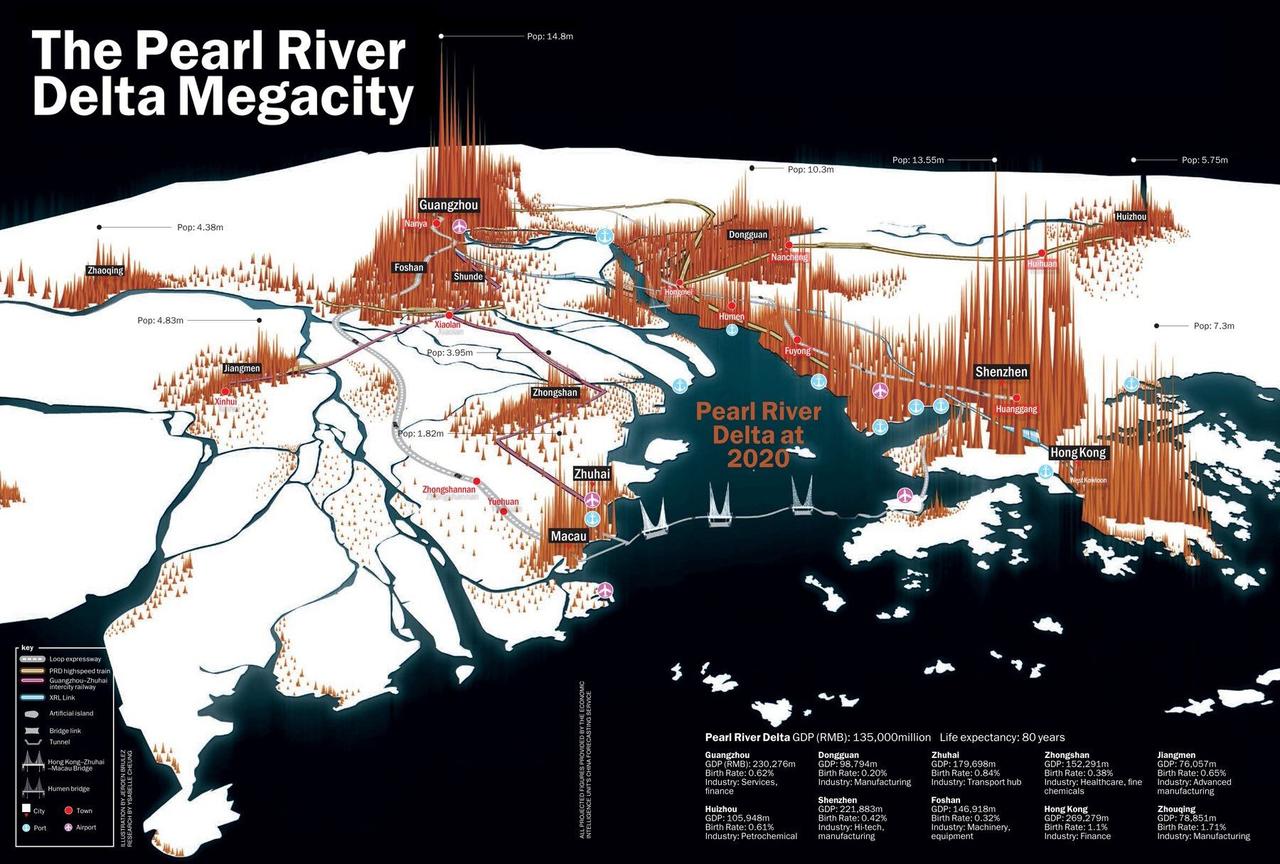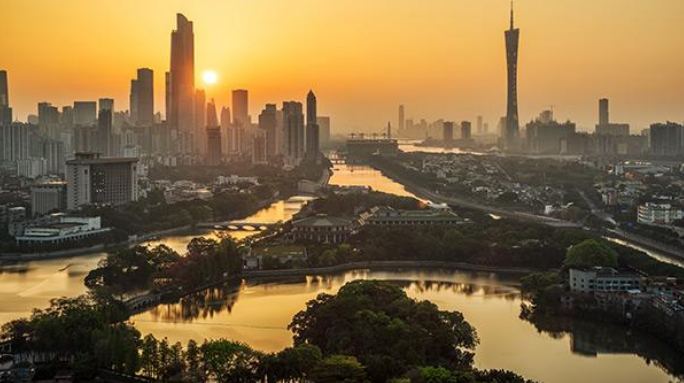Behind China’s Takeover Of Hong Kong: The Pearl River Delta Megacity
Tyler Durden
Mon, 07/06/2020 – 22:20
By Mustafa Zaidi, Research Director at Clarmond Wealth
As Hong Kong was being handed over in early July 1997, my old colleague and I began a series of short visits throughout the Pearl River Delta, from Macau to Shenzen to Canton; all rather sleepy spots relative to the towering buzz of Hong Kong. In Macau there was an unexpected statue of Jorge Alvares, the Portuguese explorer, who arrived here in 1513; he was soon followed a few years later by his colleague Rafael Perestrello, who happened to be a cousin of Christopher Columbus…so strange to think a single family produced explorers that sailed west to America and east to China.
At the end of our visit we concluded that the area had potential but given the lack of transport, communication and legal integration, it would be a very lengthy commitment and we reported back accordingly. It was too long term for the principals.
Today this long integration is on the verge of being complete and it will make the Pearl River Delta, now renamed as the “Greater Bay Area” (GBA), a rival to the great urban areas such as New York, San Francisco, and Tokyo.
To give a sense of the GBA its population is 71m and comprises ten key cities. The ‘Big Three’ are Hong Kong with GDP of$340bn, Shenzhen ($330bn) and Guangzhou ($320bn). The GDP of the whole GBA is $1.5tr. In comparison New York (pop. 20m) has a GDP of $1.6tr, San Francisco (pop. 7m) $800bn, and Tokyo (pop. 40m) $1.9tr.
The GBA is already one of the most valuable urban clusters on the globe and will certainly overtake its cousins. Over the last decade key road, rail, and bridge projects have been completed. Projects include the HK-Zuhai-Macau bridge, the Shenzhen-Zhongshan bridge, and high speed rail from Hong Kong to Guangzhou (the XRL). With completion of the transport and communication infrastructure now in sight, the final step is to bring the two Special Administration Regions (HK/Macau) into a seamless zone, where each city has specialisations: finance for HK, high tech manufacturing for Shenzhen, which is where Huawei is based along with its outlandish European-style campus called Oxhorn, Macau for entertainment, and Guangzhou for shipping; the other smaller cities will grow and find their own “flavor”.

The current step by step reduction of HK autonomy needs to be seen through the lens of the GBA, given that HK becomes a smaller component of the regional economy and a very small one of the national economy.
Hong Kong, as we wrote a year ago, is following a similar trajectory to Trieste, once the key city of commerce for the Austro-Hungarian Empire that became just another Italian city. The global commotion about HK misses how the current rulers see the status of HK in the larger GBA scheme, which for the Chinese Communist Party is going to be the engine of their growth – they are forecasting doubling over the next decade.
via ZeroHedge News https://ift.tt/31SlzKE Tyler Durden
